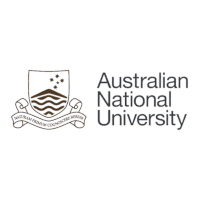
08 Nov Phd – Novel Algorithms That Transform Pupil-diameter Time Series to Biomarkers for Disease
What Our Eyes Can Tell about Our Health?
Description
What Our Eyes Can Tell about Our Health?
Computational methods for pupil-based disease diagnostics
Pupils are a diagnostic window onto the eye and brain circuits that govern their movements and hold the promise of contactless disease screening. However, the journey from pupil response to disease biomarker is a challenging road paved with complicated computational methods and ingenious visual stimulus design. A biomarker refers to a characteristic that is objectively measured and evaluated as an indicator of normal biological processes, pathogenic processes, or pharmacologic responses to a therapeutic intervention (US National Institutes of Health. Biomarkers Definitions Working Group, 1998). When combined with computational methods to allow systematic data analyses at scale to discover disease, immune, and treatment-response signatures, biomarkers can be used to develop novel diagnostics.
- We seek a PhD candidate with a background in computer science, computational neuroscience, or applied mathematics to join a multidisciplinary team developing novel algorithms that transform pupil-diameter time series to biomarkers for disease.
- Students with strong analytic and programming abilities combined with an interest in solving big health problems through engineering are encouraged to apply.
The position would jointly supervised by Dr Elena Daskalaki and Dr Josh van Kleef and attract a generous top-up scholarship of $10K p.a. for 3 years provided by our commercial partner (Konan Medical USA). It is expected that suitable candidates would have qualified for an Australian Postgraduate Award or equivalent scholarship for international candidates.
This research will be delivered in partnership with Our Health in Our Hands (OHIOH), a strategic initiative of the Australian National University, which aims to transform healthcare by developing new personalised health technologies and solutions in collaboration with patients, clinicians, and health care providers. Research undertaken by the group has already resulted in a number of patents, so there is strong potential for commercial applications arising from this project.
Team
A/Prof. Hanna Suominen (ANU School of Computing)
Prof. Ted Maddess (JCSMR)
Dr. Elena Daskalaki (ANU School of Computing)
Dr. Josh van Kleef (JCSMR)
References and Reading Recommendations
Carle, C.F., James, A.C., Kolic, M., Loh, Y.W. and Maddess, T., 2011. High-resolution multifocal pupillographic objective perimetry in glaucoma. Investigative Ophthalmology & Visual Science, 52(1), pp.604-610.
Carle, C.F., James, A.C., Rosli, Y. and Maddess, T., 2019. Localization of neuronal gain control in the pupillary response. Frontiers in neurology, 10, p.203.
James, A.C., Ruseckaite, R. and Maddess, T., 2005. Effect of temporal sparseness and dichoptic presentation on multifocal visual evoked potentials. Visual Neuroscience, 22(1), p.45.
Maddess, T.L., James, A.C. and Carle, C.F., Australian National University, 2017. Clustered volley method and apparatus. U.S. Patent 9,848,771.
Applications
To express your interest in these PhD scholarship, please email the following documents to Josh van Kleef (joshua.vankleef@anu.edu.au):
- Current CV
- Research proposal (max 2 pages)
- Colour copies of all transcripts and completion certificates of prior study, in original language and official English translations
- Contact details for 3 referees.


Sorry, the comment form is closed at this time.